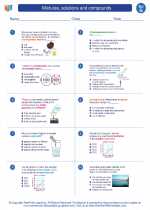Inflammation
Inflammation is a biological response of the body's tissues to harmful stimuli, such as pathogens, damaged cells, or irritants. It is a protective mechanism that helps the body to heal and defend itself against infection and injury. Inflammation can be acute or chronic, and it plays a crucial role in the body's immune response.
Causes of Inflammation
There are several potential causes of inflammation, including:
- Infection (bacterial, viral, fungal, etc.)
- Physical injury
- Chemical irritants
- Autoimmune disorders
- Allergies
Signs and Symptoms of Inflammation
The classic signs of acute inflammation are redness, heat, swelling, pain, and loss of function in the affected area. These symptoms are caused by increased blood flow and the accumulation of immune cells at the site of inflammation.
Process of Inflammation
The process of inflammation involves a series of events, including:
- Vasodilation: Blood vessels near the site of inflammation widen, allowing increased blood flow to the area.
- Increased vascular permeability: Blood vessels become leaky, allowing immune cells and fluid to move from the bloodstream into the surrounding tissue.
- Recruitment of immune cells: White blood cells, such as neutrophils and macrophages, are attracted to the site of inflammation to help combat the harmful stimuli.
- Tissue repair and resolution: Once the threat has been neutralized, the body works to repair the damaged tissue and resolve the inflammation.
Study Guide
Here are some key points to remember about inflammation:
- Describe the causes of inflammation and give examples of each.
- Explain the signs and symptoms of acute inflammation.
- Outline the process of inflammation, including the events that occur at the cellular and tissue levels.
- Compare and contrast acute and chronic inflammation, including their causes and consequences.
- Discuss the importance of inflammation in the body's immune response and overall health.
Understanding inflammation is crucial for grasping the body's immune system and its responses to various stimuli. It plays a vital role in maintaining overall health and well-being.
.




